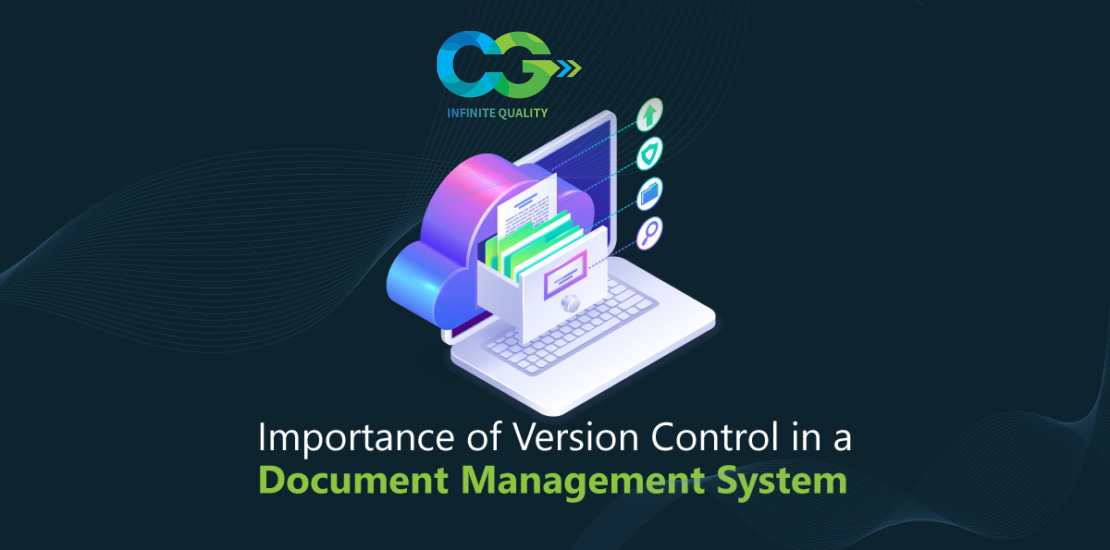Document Version Control | Importance of Version Control in a Document Management System

Article Context:
Version control is required for documents involving processes, procedures, and best practices that undergo revisions and redrafting to maintain regulatory guidelines and compliance. Throughout the process, we can track changes and identify when key decisions were made. This is especially relevant when reviewing electronic documents by several people. Further, it is needed when users intend to access the current policy or the procedures needed for manufacturing a product that meets the defined specifications.
When a document is edited and updated, the document version is updated. Document version control tracks and monitors how a document has evolved, so users always see the most recent version. The life sciences industry relies heavily on this feature as multiple users may work simultaneously on a single document. Without this feature, the tracking of who, when, and what changes were made to the document becomes difficult. This indicates that users need to view and review newer versions and not waste their time on outdated documents.
How does it work?
The concept behind the automatic operation of version control is quite simple. When the creator/owner or the assignee/collaborator opens the document to edit, the document is in a checked-out state enabling the permission of reading the only draft document to others, if they have access to draft documents. The editions are tracked and logged. When the document is checked back in, the changes are frozen and the document is in a read-only state of all including the owner/creator, assignee, and the collaborator. Additionally, the check-out state is backed up with three approaches for the users to choose from. The version management tracks the changes providing a clear view of the version revision. The user can opt to edit the document in the current version, or every edit with a version bump or decline creating a new major or minor version. This is again an organization-specific configuration.
This version control automation with document system management allows organizations to break free from long email trails or sharing doc tools. Furthermore, the version control system ensures a non-editable audit trail of who, when, and what changes they made and how and why the document changes are proposed, reviewed, and revised with e-signatures.
Advantages of Version Control:
In a DMS (document management system), version control is an automated operation that allows users to locate and view effective documents while superseding outdated and not-in-use documents. The following are several advantages of implementing a DMS with Version Control for organizations.
Tracking Changes
The method automatically logs changes and edits made to a document over time. The user can track document changes throughout the workflow stages and life cycle of a document, keeping in mind the contributions added by multiple users at the same time. The task of tracking changes from the first to the final stages of the same document version and several versions of the same document is cumbersome and impossible in a paper-based process. With a document management system and version control in place, it is possible to determine what changes were made, who made them, and when, providing a comprehensive view of the change path.
Collaboration
The version control system makes it possible for several users to collaborate and work on a document. This is because it makes it possible for them to find and edit something that another user did a while ago.
Document version history
The version history is secured with a list of versions of the document and essential information about the document, such as why, when, and who made the changes. It is beneficial to the user working on the latest version since it helps resolve problems encountered in previous versions. Furthermore, only the most recent and effective version is available to users, and all previously effective documents are superseded with non-editable audit trails.
Reduce duplicity
Version control in the DMS reduces the duplication of outdated versions of a single document. As a result, errors caused by contradictory information are evident in various documents. Documents are frozen at the final version, limiting changes and allowing for the creation of new versions, leaving no room for errors.
Efficiency
Document version control improves collaboration efficiency by allowing users to work together simultaneously on a document and simplifies complex processes and procedures in a short amount of time. Because the previous versions are preserved in history, the user can roll back to them and identify the grey area where changes can be made using the latest versions.
Compliance
A paper-based process makes it difficult for users to communicate and identify changes in a document. Users have difficulty accessing current and effective documents. As accessibility controls cannot be enabled for paper-based documents, they cannot be restricted to specific users. Document version control helps resolve this issue by assisting the organization in defining the accessibility of confidential information, organizing critical compliance information, and providing easy access to relevant content.
In Conclusion
To summarise, there are fewer errors with DMS version management because users use the most recent approved document version, adding another layer of security and ensuring the organization remains compliant and regulated. Furthermore, all documents are stored on the cloud with all version changes intact, allowing users to go back at any time and unarchive the essential documents while comparing the current version to the superseded version.
